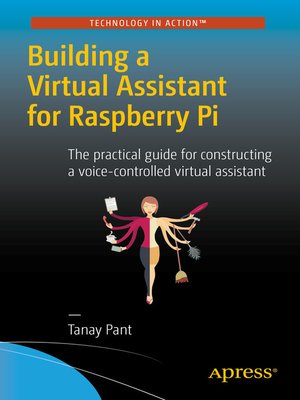Building a Virtual Assistant for Raspberry Pi
ebook ∣ The practical guide for constructing a voice-controlled virtual assistant
By Tanay Pant

Sign up to save your library
With an OverDrive account, you can save your favorite libraries for at-a-glance information about availability. Find out more about OverDrive accounts.
Find this title in Libby, the library reading app by OverDrive.



Search for a digital library with this title
Title found at these libraries:
| Library Name | Distance |
|---|---|
| Loading... |
Building a Virtual Assistant for Raspberry Pi walks you through various STTs and TTSs and the implementation of these components with the help of Python. After that you will start implementing logic for handling user queries and commands, so that the user can have conversations with Melissa. You will then work to improve logic handling to detect what the user wants Melissa to do. You will also work on building some useful applications/modules for Melissa, which will allow you to gain interesting information from Melissa such as the time, weather information, and data from Wikipedia.
You will develop a music playing application as well as a note taking application for Melissa, laying the foundations for how Melissa can be further extended. Finally, you will learn how to deploy this software to your Raspberry Pi and how you can further scale Melissa to make her more intelligent, interactive and how you can use her in other projects such as home automation as well.
What You'll Learn
Who This Book Is For
Anyone who has built a home automation project with Raspberry Pi and now want to enhance it by making it voice-controlled. The book would also interest students from computer science or related disciplines.







